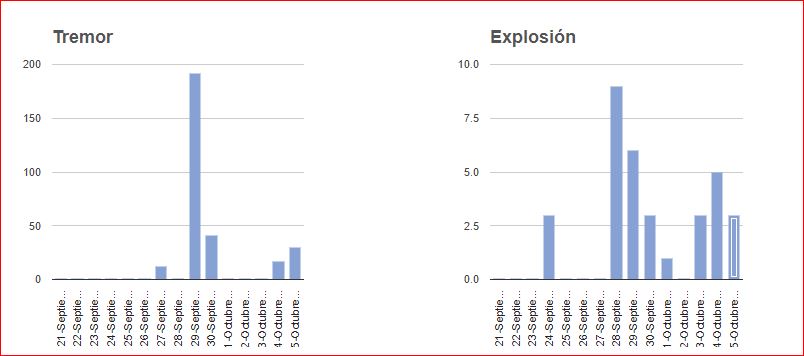
A total of 46 minor to moderate explosions were detected. About 36 VT earthquakes were also noted throughout the two months. On clear nights, crater incandescence was observed, though cloudy weather was common. There were an average number of 92 exhalations per day, which consisted mostly of water vapor, volcanic gases, and a small amount of ash, the most of which occurred on 25 September with 260. Courtesy of Sentinel Hub Playground.Īctivity during August and September was relatively high compared to the rest of the reporting period. Images use Atmospheric penetration rendering (bands 12, 11, 8a).

Sentinel-2 infrared satellite images showing thermal anomalies in the summit crater of Popocatépetl on 9 August (top left), 3 October (top right), 12 November (middle left), 27 November (middle right), 7 December (bottom left) 2021, and 31 January (bottom right) 2022. Occasional small to moderate sulfur dioxide plumes were detected with satellite instruments each month (figure 186).įigure 188. The average number of gas-and-ash emissions was 54 per day, with a maximum number of 260 on 25 September. A total of about 72 volcano-tectonic (VT) tremors were detected throughout the reporting period. Tremor activity reached an average of 261 minutes per day from August to January 2022, but dropped off significantly after September. CENAPRED reported the number of low-intensity gas-and-ash emissions or “exhalations” and the number of minutes of tremor in their daily reports (figure 185). Some minor ashfall was reported during mid-September.

Gas-and-steam emissions, some of which contained ash, remained ongoing throughout August 2021-January 2022. This report covers the period from August 2021 through January 2022, characterized by daily low-intensity gas-and-ash emissions, volcano-tectonic tremors, and crater incandescence, based on information from México's Centro Nacional de Prevención de Desastres (CENAPRED) and various satellite data. Recently, activity has consisted of intermittent crater incandescence, frequent ash explosions, and ash emissions. Records of activity date back to the 14th century and the current eruption period has been ongoing since January 2005, which has included numerous episodes of lava-dome growth and destruction within the summit caldera. Popocatépetl is located 70 km SE of Mexico City, Mexico, and contains a 400 x 600 m wide crater. Continuing minor ash emissions and crater incandescence during August 2021-January 2022


 0 kommentar(er)
0 kommentar(er)
